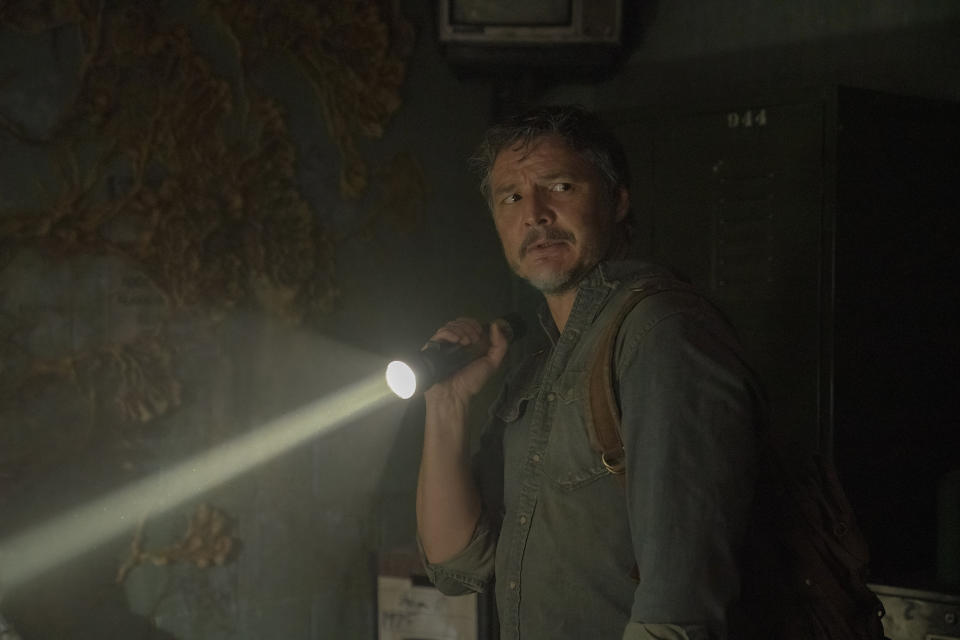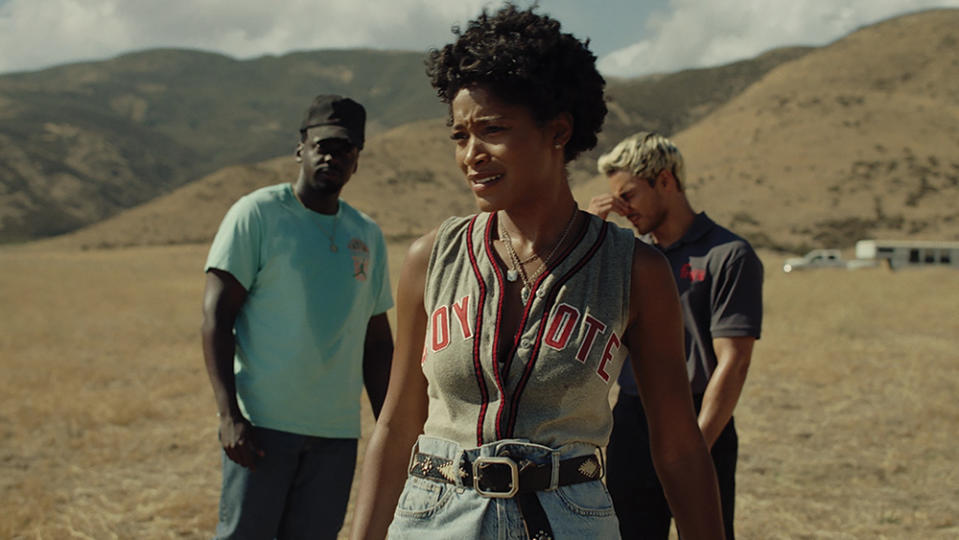How the ‘A Spy Among Friends’ Score Creates Audible Paranoia for Its Spy Characters

- Oops!Something went wrong.Please try again later.
- Oops!Something went wrong.Please try again later.
- Oops!Something went wrong.Please try again later.
The story of Kim Philby, the high-ranking British intelligence official who turned out to be one of the biggest double agents in U.K. history (and a hero of the Soviet Union, if you take the Russian point of view), is well known at this point. Dozens of books, fiction and nonfiction, have been written about how Philby took in the great and the good of MI6 and the CIA for decades before he finally had to flee across the Iron Curtain in 1963.
Related Stories

From Blood-Red Gowns to Bloody Suits, These New Series’ Costumes Deserve Emmy Consideration

‘The Last of Us,’ ‘Mrs. Davis,’ and ‘Wednesday’ Had Some Surprising Emmys Craft Submissions
This version of Philby, played with the kind of rumpled fatalism only Guy Pierce can muster, spends a lot of time keeping those friends close at the cost of his own soul, particularly Nicholas Elliott (Damian Lewis). But MGM Television’s “A Spy Among Friends,” which traces Philby and Elliott’s relationship from World War II to the ramifications of Philby’s defection (though not necessarily in that order) has no interest in spelling out how genuine the friendships of spies can be. It is interested in giving us the clues, hidden (among other places) in the adrenaline and emotion of the miniseries’s remarkable score.
More from IndieWire
From Blood-Red Gowns to Bloody Suits, These New Series' Costumes Deserve Emmy Consideration
'The Last of Us,' 'Mrs. Davis,' and 'Wednesday' Had Some Surprising Emmys Craft Submissions
Composer Dustin O’Halloran crafted a score that acts as the limited series’ own double agent, reflecting the panic, paranoia, heartbreak, and disillusionment beneath the characters’ cool facades. O’Halloran structures the show’s music as a fragmented heartbeat that creates intensity, emotion, and the kind of improvisational mood that perfectly fits with the secret lives the main characters lead. In the video below, you will see how the instrumental choices O’Halloran made and the ways in which he stitched the score together give “A Spy Among Friends” a sound all its own.

The Score of “A Spy Among Friends”
O’Halloran started creating the score by deciding what it wasn’t. He made the deliberate choice not to go with any overly electronic instruments, so everything has the same tactile quality of the fictional MI5 agent Lily Thomas (Anna Maxwell Martin) cueing tape recordings on a cassette player, or Philby smoking out a secret message from the CIA with the flick of a lighter. The instruments would need to have the same tactile quality as the tools of the Cold War spies in the limited series.
O’Halloran also deliberately avoided the language of prestige television, the soaring strings and mournful horns that give the viewer an overly simple answer to scenes of nuance and ambiguity. “I wanted it to sound modern,” O’Halloran told IndieWire, “in a way that you would feel like you were in it today and you didn’t feel like you were in a history piece.”
One thing that helps the score not feel like a history piece is that the music in “A Spy Among Friends” is used sparsely, for very deliberate moments of heightened tension and emotion. O’Halloran estimated that he only created about 20 to 25 minutes of music cues for each of the miniseries’ six episodes, while the same show in hands other than those of creator Alexander Cary and director Nick Murphy might opt for double that per episode.
Those constraints all created a score that isn’t really tied to character themes or strong leitmotifs but is more improvisational, tonal, and instinctual, a mix of a jazz sensibility with the structure of experimental electronica. It sounds like no James Bond movie ever made but feels very much like the experience of peering through a foggy rearview mirror to see if anyone’s in a dark raincoat behind you. “The spirit of jazz is that moment of improvisation, and these guys are really thinking on their feet and trying to outplay the next person,” O’Halloran said. “They’re all riffing their own way.”
The improvisational structure of the music is matched by the unconventional instrumental choices that O’Halloran makes, creating a sound that is as mysterious and layered, and perhaps ultimately as unknowable as the show’s two protagonists. For instance, while there’s heavy use of saxophone throughout the score, it never announces itself as such. “There’s this amazing saxophonist who’s part of the experimental jazz scene here in Iceland. We really worked on just the sounds that the saxophone makes. He was doing continuous breathing, not really playing notes, just trying to get all these interesting sounds out of it,” O’Halloran said. “[Then I started taking] the material, pitch-shifting it, creating harmonies that were never there.”
One of the most unique instruments used was the Cristal Baschet, an invention from the 1950s made of metal rods and crystal laid out like a piano that creates different tones when rubbed with water. “It’s a completely acoustic instrument but it sounds like a synthesizer, almost. It has really weird harmonics,” O’Halloran said. “I felt like this story was a chance for me to get away from any cliches or trappings of a period piece. I was trying to put together just a weird bunch of instruments and see if it would work.”
O’Halloran blended together everything from Cristal Baschet tones to saxophone breaths to the clatter of pieces of wood and ceramic plant holders to create sounds with the propulsion and potential violence of the world of spies. The music, like the protagonists, stays one step ahead of the audience in revealing their goals and what their friendship across enemy lines ultimately means — if it means anything at all.
By creating a sound that appears alongside picture not meant to guide emotion but to create the sense of the psychological impact of spywork, the “A Spy Among Friends” score gets to be a whole lot more than the sense of import and scope that period dramas often lean on. Or, as O’Halloran said, “The whole thing was a mood.”
READ MORE CRAFT CONSIDERATIONS

Craft Considerations
How the ‘A Spy Among Friends’ Score Creates Audible Paranoia for Its Spy Characters
Watch how composer Dustin O’Halloran layers paranoia and heartbreak into an experimental score that is anything but standard tradecraft.
May 22, 2023 3:30 pm

Hot Wheels and Realism: Crafting Stunts for ‘The Night Agent’
The Netflix series’ star Gabriel Basso and stunt coordinator Mike Mitchell told IndieWire about the combination of prep and spontaneity that made the fights so visceral.
By Jim Hemphill
May 19, 2023 1:00 pm

‘Black Bird’ Creates Uneasy Truths Through Performance, Pace, and Sound
Watch how the editing, cinematography, and sound intensify the real-life story of a suspected serial killer in the Apple TV+ limited series.
By Daron James
May 17, 2023 4:00 pm

‘Nope’: How Keke Palmer Grounded an Out-of-This-World Horror Story
Watch star Keke Palmer discuss how she and filmmaker Jordan Peele figured out how to tell a sibling-bond story with sky-high stakes.
By Marcus Jones
January 9, 2023 3:30 pm
Best of IndieWire
Where to Watch This Week's New Movies, from 'Fast X' to 'Master Gardener'
Every Palme d'Or Winner from the Cannes Film Festival, Ranked
Sign up for Indiewire's Newsletter. For the latest news, follow us on Facebook, Twitter, and Instagram.

